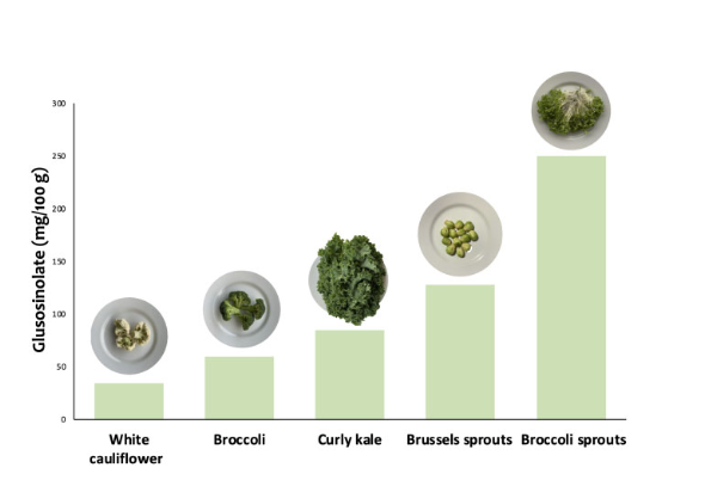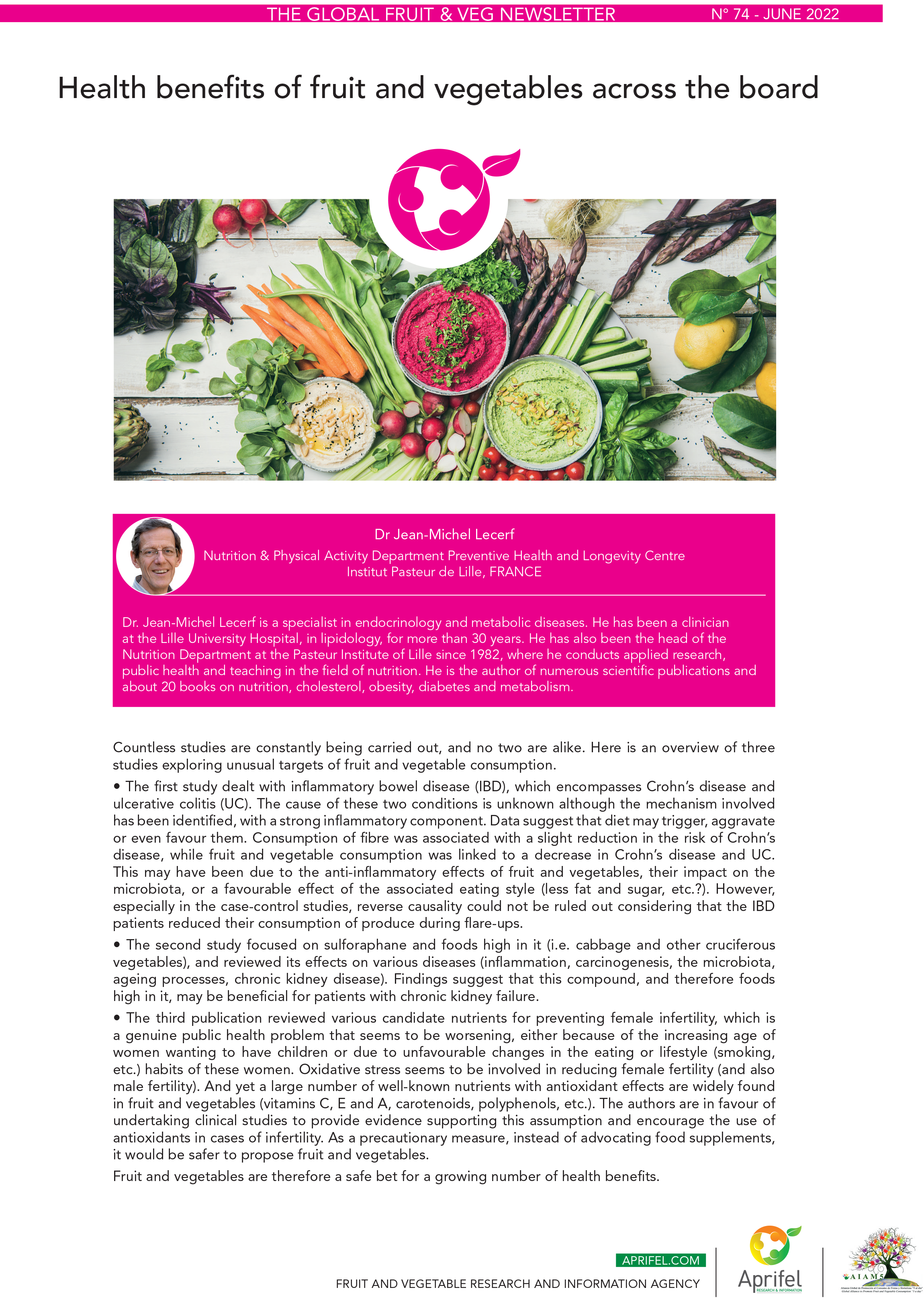Cruciferous vegetables: rationale for exploring potential salutary effects of sulforaphane-rich foods in patients with chronic kidney disease
Numerous studies have shown health benefits of cruciferous vegetables. They contain vitamins, minerals, phenolic compounds, and more particularly sulforaphane. Sulforaphane is a sulfur-containing isothiocyanate which has numerous essential roles as an antimicrobial, antioxidant, anti-inflammatory, (Vanduchova ert al, 2019; Houghton et al.) and anti-oncogenic (Calcabrini et al, 2020) agent and as an epigenetic modulator (Hyun et al, 2019)
Health benefits of sulforaphane have been more studied in the context of cancer and its potential preventive effects were examined on diabetes, cardiovascular and neurological diseases (Bai et al. 2015 ; Klomparens E et al,. 2019)
A recent review of the literature examined the potential benefits of sulforaphane against various diseases and some elements are described in this article.
Cruciferous vegetables : source of sulforaphane
Sulforaphane is a sulfur-containing isothiocyanate, formed when its precursor, glucoraphanin, an organic compound of the glucosinolate family, is transformed by an enzyme, myrosinase, as a result of damage to the plant (e.g. chewing), allowing the enzyme and its substrate to combine and react. Sulforaphane is one of the main activators of Nrf2 which neutralize oxidants.
Cruciferous vegetables such as broccoli, cauliflower, kale, and cabbage are rich in sulforaphane. Broccoli sprouts contain the highest concentration of sulforaphane with 1153 mg/100 dry weight (mature broccoli contains between 44 and 171 mg/100 g dry weight (see figure 1 relative to the glucosinolate content in cruciferous fresh vegetables)) (Nakagawa et al., 2006).

Litterature on sulforaphane effects
- Inflammation
Inflammation and oxidative stress are intrinsically involved in the pathogenesis of chronic noncommunicable diseases such as cardiovascular disease, hypertension, obesity, chronic kidney disease, diabetes, and cancer. Accordingly, numerous nutritional strategies have been developed and applied to decrease inflammation and oxidative stress, and to improve the quality of life of affected individuals. According to studies summarized in this review, sulforaphane treatment seems to be an efficient anti-inflammatory and antioxidant strategy. Clinical studies in humans should be encouraged because only a limited number of published reports dealing with this topic currently exist in the literature. (Mazarakis et al., 2020; Tan SM et al., 2014)
- Microbiota
Dietary fibers and phytonutrients are known as essential modulators of the gut microbiota. Therefore, the intake of cruciferous vegetables can alter the composition of the gut microbiota and lead to the growth of specific bacteria that increase the production of sulforaphane, because gut microbiota metabolize glucosinolate to sulforaphane (Kaczmarek et al., 2009; Liu X et al., 2017).
- A modulator of ageing processes
Accumulating evidence suggests that isothiocyanates, including sulforaphane, can counteract aspects of the ageing process via a range of underlying mechanisms, from Nrf2-dependent or independent pathways to modification of the epigenetic landscape of ageing. Given the role of Nrf2 as a geroprotective agent and mediator of ageing processes, it is tempting to speculate on the capacity of sulforaphane to prevent or mitigate the progression of ageing-related diseases (Dai et al., 2020)
- Effect on chronic kidney disease
Sulforaphane acts as a geroprotectant, modulates the epigenetic landscape, protects against mitochondrial damage, and helps maintain a normative gut microbiota, thus suggesting a promising role for sulforaphane in the control of several diseases. In this context, patients with chronic kidney disease, a disease characterized by inflammation, oxidative stress, gut dysbiosis, mitochondrial dysfunction, and an altered epigenetic machinery, may be an ideal patient group for using food as a novel treatment strategy. Although there are no clinical studies demonstrating an effect of sulforaphane in chronic kidney disease, findings of studies in other patient groups suggest that sulforaphane could be a promising adjunctive therapy. Notably, sulforaphane therapy has already been shown to improve renal function in a range of preclinical models of renal damage. Clinical studies with patients with chronic kidney disease using sulforaphane should thus be encouraged to promote improvement in patients’ quality of life.
- Sulforaphane is an important bioactive compound present in cruciferous vegetables
- An extensive literature has shown that the main route of action of sulforaphane is by its antioxidant potential and activation of the transcription factor Nrf2, which has a key role in the antioxidant response.
- Sulforaphane acts as a geroprotectant, modulates the epigenetic landscape, protects against mitochondrial damage, and helps maintain a normative gut microbiota, thus suggesting a promising role for sulforaphane in the control of several diseases, including chronic kidney disease
Based on : Cardozo LFMF, et al. Cruciferous vegetables: rationale for exploring potential salutary effects of sulforaphane-rich foods in patients with chronic kidney disease. Nutr Rev. 2021 Oct 11;79(11):1204-1224

